As a parent or professional photographer, capturing the perfect photos of babies can be a difficult task. It takes patience, skill, and the right equipment to get the job done. From cameras to lenses and lighting, there are many aspects to consider when choosing the best equipment for photographing babies. In this article, we'll discuss the different cameras and equipment available for photographers, as well as safety tips to ensure a successful shoot. Whether you're a professional or an amateur photographer, selecting the right camera and equipment for photographing babies is essential.
Different cameras have different features and capabilities, and the right equipment can make all the difference in capturing those special moments. We'll explore some of the most popular cameras and equipment for capturing the perfect photos of babies.
Choosing the Right Camera and Lenses for Baby Photography
When it comes to capturing the perfect photos of babies, choosing the right camera and lenses is essential. Baby photography often requires a different set of lens and equipment than other genres of photography. A good starting point is a DSLR camera with a sharp lens such as a 50mm prime lens or a 100mm macro lens.These lenses will provide you with a shallow depth of field, which is great for isolating baby’s facial features and creating beautiful portraits. Another important factor to consider when it comes to lenses is the minimum focusing distance. Most lenses have a minimum focusing distance of around 18 inches, but if you plan on getting up close and personal with your subjects, then you may want to look into lenses that have a minimum focusing distance of 12 inches or less.
Safety Tips for Working with Babies
Safety should always be the number one priority when photographing babies.When you’re working with such young subjects, it’s important to be aware of the risks that can come with handling them. It’s also essential to make sure that the environment is comfortable and safe for the baby to be in. Make sure that all props and backdrops are securely placed so that they can’t be easily toppled over by an active baby. Always keep an eye on your subject and make sure they are secure and safe throughout the shoot.
Tips for Getting the Perfect ShotWhen it comes to taking the perfect photo of a baby, timing is everything. Babies move quickly, so you need to act fast in order to get the shot you want. It helps to be prepared before you start shooting so that you don’t waste precious time fumbling around with your equipment. Have your camera settings dialed in, so you can just point and shoot.
It also helps to have some basic poses in mind before you start shooting, as this will ensure that you capture the best angles of your subject.
Lighting and Composition Advice
Lighting and composition are two key elements when it comes to baby photography. Natural light is often the best choice when it comes to lighting, as it produces soft, even light that flatters your subject’s features. If you’re shooting indoors, try using a reflector or diffuser to help soften the light and create beautiful portraits.As for composition, always keep the Rule of Thirds in mind when setting up your shot. This will help create balance and draw attention to your subject.
Suggestions for Props and Backdrops
Props and backdrops can add interest and depth to your shots and can often make them more memorable. When it comes to props, simple is usually better as too much clutter can take away from the focus of your shot.Try using toys, blankets, and other items that are special to your subject as props for your shots. As for backdrops, try using plain colors or subtle patterns as they won’t draw too much attention away from your subject.
Types of Editing Software for Post-Processing
Once you’ve taken all of your shots, it’s time to move onto post-processing. There are many different types of software available for post-processing photos, but some of the most popular options include Adobe Lightroom, Photoshop, Capture One Pro, and Luminar.These programs allow you to make adjustments such as color correction, sharpening, cropping, and more. It’s important to note that post-processing should be done tastefully – too much editing can take away from the natural beauty of a photo.
Editing Techniques to Enhance Photos
When it comes to editing baby photos, there are a few techniques that can help enhance your images. One popular technique is selective coloring – this involves desaturating certain parts of the image while keeping others in full color. This technique can help draw attention to certain elements in the image while keeping other elements in the background.Additionally, adding grain can help create a nostalgic feel or evoke certain emotions in viewers.
Ideas for Displaying and Sharing Photos
Once you’ve captured and edited your photos, it’s time to share them with the world! There are many options for displaying and sharing photos these days – prints, digital albums, slideshows, online galleries – the list goes on! If you want to display your photos in your home or office, consider printing them out on canvas or framing them for display. For sharing online, consider creating an online portfolio or using social media platforms such as Instagram or Facebook. Photographing babies is an art form that requires patience and skill – but it can also be very rewarding! With the right equipment, safety tips, tips for getting the perfect shot, lighting advice, props and backdrops suggestions, editing software knowledge, editing techniques, and ideas for displaying and sharing photos – you will be well on your way to capturing beautiful photos of babies!Post-Processing Tips
Post-processing is an essential part of photography, and photographing babies is no exception. To get the best results when photographing babies, it is important to use the right editing software and techniques. Popular editing software used by baby photographers includes Adobe Lightroom and Photoshop.Basic editing techniques used to enhance photos include color correction, cropping, and retouching. Color correction can help make photos more vibrant and vibrant colors are especially important when photographing babies. Cropping can be used to remove distractions from the background or to help create interesting compositions. Retouching can be used to remove skin blemishes or other unwanted elements in a photo.
Filters can also be used to add a unique look to photos. Filters can be applied to enhance colors, add a vintage look, or even turn a photo into a black and white image. Experimenting with filters can help create interesting photos that stand out from the crowd.
Safety Tips for Photographing Babies
When photographing babies, it is important to consider their safety as a top priority. Photographers should never leave the baby unattended, use props safely, and follow general safety guidelines.Here are some tips on how to ensure the safety of the baby during a photo shoot:Never Leave the Baby UnattendedIt is very important to never leave a baby unattended during a photo shoot. It is important to have an adult present at all times to ensure the baby's safety. This person should be familiar with the environment and be able to respond quickly to any situation.
Use Props Safely
When using props in a photoshoot, it is important to make sure that they are safe for the baby. Props should be selected carefully and should not have any sharp edges or dangerous materials that could harm the baby.They should also be firmly secured so that they do not fall or move around during the photoshoot.
Follow General Safety Guidelines
Photographers should always follow general safety guidelines when photographing babies. This includes making sure that the temperature of the room is comfortable for the baby, ensuring that all equipment is properly secured, and avoiding any sudden movements that could startle or harm the baby. Additionally, photographers should always have a first aid kit on hand in case of any emergencies. Photographing babies can be a rewarding experience for both the photographer and the parents. By following these simple safety tips, photographers can ensure that they capture perfect photos of babies while keeping them safe.Camera Equipment for Baby Photographers
When it comes to photographing babies, having the right equipment is essential for capturing the perfect shots.Cameras and lenses must be chosen carefully and with consideration for the baby’s age, environment, and distance from the camera.
Cameras
The best camera for baby photography depends on the photographer’s budget and needs. Professional photographers may opt for a full-frame digital SLR camera, while those on a budget may prefer an entry-level DSLR or mirrorless camera. Point-and-shoot cameras are also an option, but they may not have as many features or offer the same quality as a more advanced camera.LensesWhen it comes to lenses, there are several factors to consider. The most important is focal length. Longer focal lengths are ideal for photographing babies because they allow the photographer to capture close-up shots without having to get too close to the baby. Wide-angle lenses are also useful for capturing larger groups of people or scenes.
Zoom lenses can be used to achieve both wide and close shots, but they may not have the same quality as prime lenses.
Accessories
In addition to a camera and lens, there are several accessories that can be used to enhance baby photography. A reflector or diffuser can be used to soften light and minimize shadows, while a tripod can be used to keep the camera steady when shooting long exposures. A remote shutter release is also a helpful tool, as it allows photographers to capture shots without having to touch the camera and potentially blur the image.When it comes to choosing cameras and lenses for photographing babies, there is no one-size-fits-all solution. Each photographer must consider their budget, needs, and preferences in order to find the right equipment for their particular situation.
Tips for Getting the Perfect Shot
Lighting - Photographing babies requires special attention to lighting. Natural light is often the best option for babies, as it produces softer shadows and more even lighting. Position the baby near a window or outside to take advantage of natural light.If you need to use artificial lighting, make sure it is diffused and that the baby is not being blinded by a bright light.
Multiple Shots
- Taking multiple shots can increase your chances of getting the perfect photo. This is especially important when photographing babies since they can move quickly and do not always follow directions. By taking a series of shots, you can capture different expressions and angles.Patience - Babies can be unpredictable, so patience is key when photographing them. Be prepared to wait for the perfect moment when the baby makes a cute face or looks in the right direction. You may have to take lots of shots before getting the one that you like.
Techniques for Capturing Natural Expressions
- To capture a baby’s natural expression, try talking softly and encouraging them to look at the camera.Move around, use silly faces or toys, and make funny noises to get their attention and create an interesting photo. If you have an assistant, they can help by making funny faces or noises to get the baby to smile or laugh.
Lighting and Composition Advice
When photographing babies, lighting and composition play a crucial role in capturing beautiful images. Natural light can be used to create stunning photographs, while artificial lighting can provide creative ways to enhance your photos.Additionally, using different angles, cropping, and props can give your pictures unique character. Finally, understanding how to capture movement can help create memorable photographs.
Natural Light
Using natural light can be a great way to bring out the beauty of your photos. Natural light is the most flattering type of lighting and can create a soft and dreamy effect. To maximize the natural light you’re working with, try to shoot in the early morning or late afternoon when the light is softest.If you’re taking photos indoors, look for windows that will let in natural light. You can also use reflectors to bounce light back onto the subject.
Artificial Light
Artificial light can also be used to create stunning images. If you’re shooting in a studio, you can use studio lights or strobes to produce bright and crisp photos. Studio lights come in various shapes and sizes and are a great way to control the lighting in a photograph.For example, you can use a softbox to diffuse harsh shadows or a beauty dish to create an even spread of light.
Angles, Cropping, and Props
In addition to lighting, angles, cropping, and props can help you create interesting compositions. Try moving around the subject to get different angles and perspectives. Don’t be afraid to get close and fill the frame with your subject. Cropping can also be used to draw attention to certain elements of a photo.Lastly, props such as stuffed animals or blankets can add visual interest and texture.
Capturing Movement
Capturing movement is another way to create dynamic photographs. When shooting babies, it’s important to capture the fleeting moments of childhood. Try using faster shutter speeds to freeze motion or slower shutter speeds to blur movement. Incorporating movement into your photos will create unique and memorable images. When photographing babies, it is essential to use the right equipment and safety tips to ensure that your shots are perfect.This article outlined important considerations when selecting camera equipment, as well as provided useful safety tips and advice on lighting and composition. Additionally, post-processing techniques were discussed to ensure that photos of babies look their best. To become a successful baby photographer, it is important to practice your skills and experiment with different techniques.


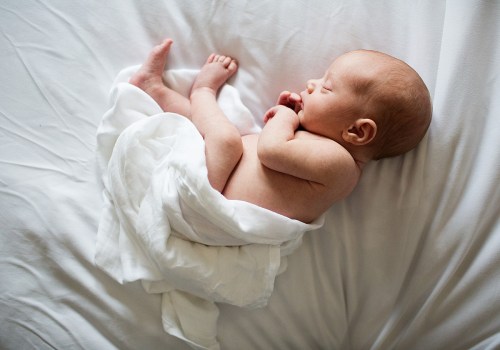
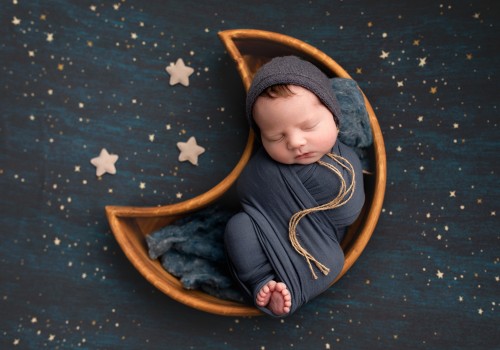
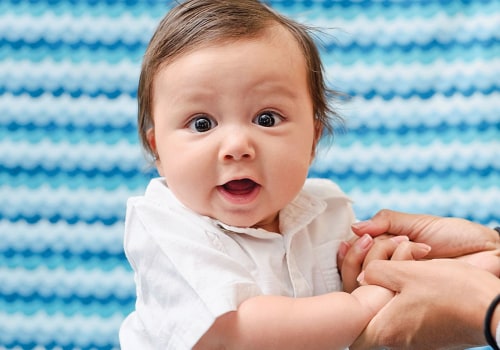

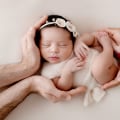
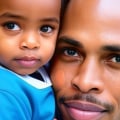
Leave a Comment